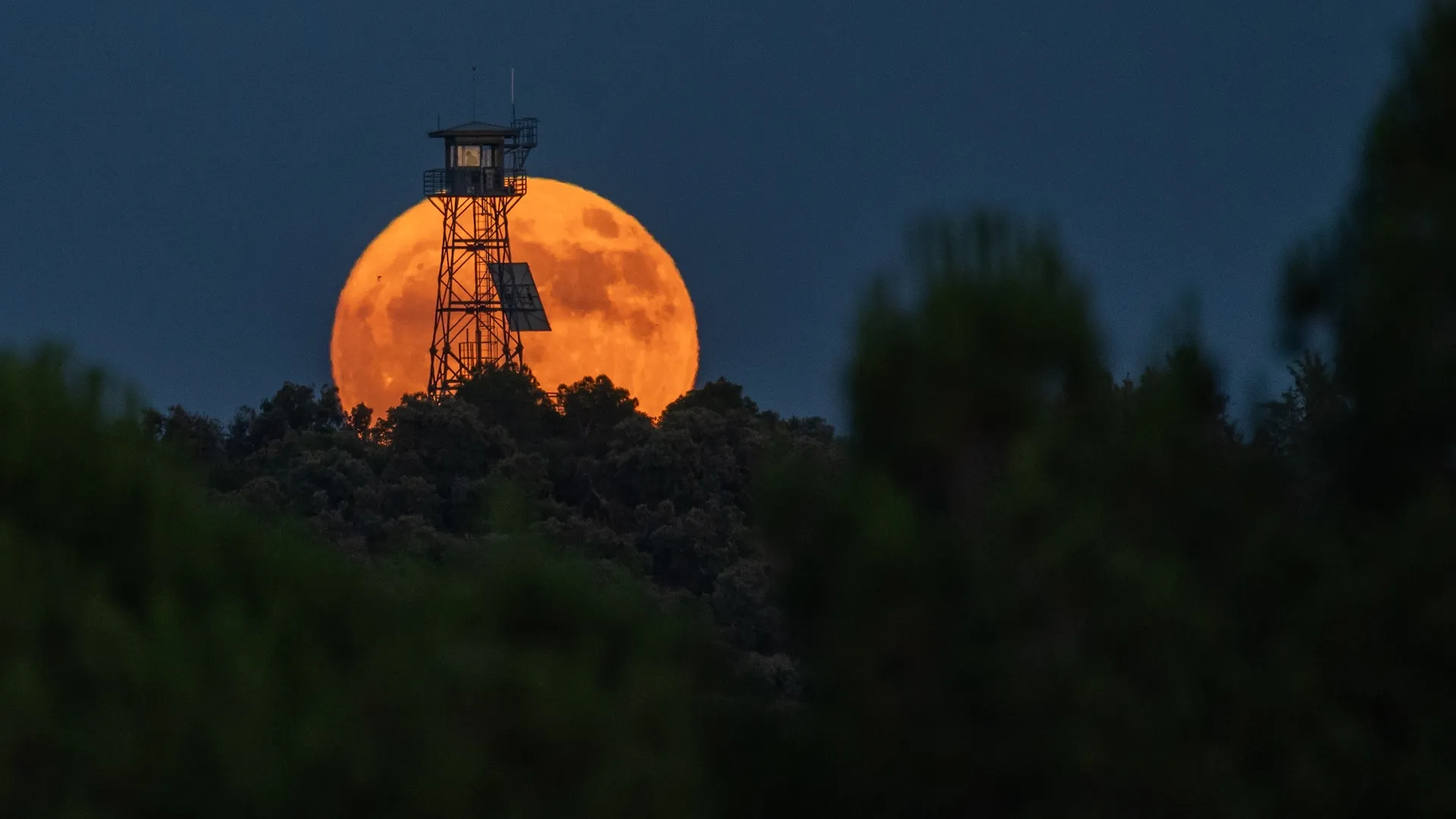Understanding the ‘Strawberry Moon’
The full moon in June is affectionately known as the ‘Strawberry Moon,’ a name that has roots in Native American traditions and is tied to the time of year when strawberries are harvested. According to the Old Farmer’s Almanac, this celestial event is celebrated not only for its beauty but also for its indication of the ripening of strawberries in North America. However, the ‘Strawberry Moon’ in June 2025 is anticipated to be even more exceptional, breaking annual records and offering mesmerizing views.
A Unique Position in 2025
This year’s Strawberry Moon will take place on June 12, 2025. What makes it particularly fascinating is its position in the night sky. Astronomers and skywatchers are eagerly awaiting this event, as it is expected to be the lowest full moon in the sky for decades. This rare occurrence presents a unique opportunity for those interested in astronomy and photography to capture the moon’s beauty in an unprecedented way.
Why Will It Be the Lowest Full Moon?
The positional rarity of the 2025 Strawberry Moon can be attributed to its apogee, the point in the moon’s orbit when it is farthest from Earth. The moon will be located in the southern half of the sky, making it appear lower than usual, particularly for viewers in the northern hemisphere. This positioning is not just a one-time event; it results from the moon’s elliptical orbit and various gravitational interactions.
As Earth continues its dynamic dance with the moon, the latter’s orbital path isn’t a perfect circle but rather a stretched oval. Consequently, there are moments when the moon is quite close to Earth (perigee) and moments when it is far away (apogee). The Strawberry Moon in 2025 happens to coincide with its apogee at a time when it will be perfectly timed with the full moon phase.
Viewing Tips for the Best Experience
With the 2025 Strawberry Moon set to be at a low elevation in the sky, it is crucial for skywatchers to find optimal viewing locations. Here are some tips to enhance the experience:
- Choose an Open Space: Find an area free from tall buildings and trees. Hills and open fields near water bodies can provide a breathtaking view of the horizon.
- Check the Weather: Clear skies are essential for optimal viewing. Expect the evening of June 12 to be a popular time for sky enthusiasts, so monitor forecasts in advance.
- Bring The Right Equipment: If you’re keen on photography, a tripod and a camera with a zoom lens can help capture stunning shots. Binoculars or telescopes may enhance the experience, allowing you to study lunar features.
Other Notable Night Sky Events in June 2025
Alongside the Strawberrry Moon phenomenon, June 2025 presents an array of extraordinary night sky events:
- Planetary Alignments: June will also be a prime month for spotting various planets, including Jupiter and Saturn. Their visibility will peak during this time when they can be seen clearly in the night sky.
- Summer Solstice: June always brings along the summer solstice in the Northern Hemisphere, occurring around June 21. As the longest day of the year approaches, it marks a unique time for both sun and moon observations.
- Geminid Meteor Shower: Though the peak occurs in December, the Geminids, which may start to become visible by mid-June, can create an exhilarating preview of the upcoming meteor shower season.
The Cultural Significance of the Strawberry Moon
The naming of the Strawberry Moon as such has deep cultural significance. Many Native American tribes used this name to signify the time to gather strawberries, which is a vital fruit for both sustenance and trade.
During the Strawberry Moon, various cultural rituals and festivals take place, celebrating nature’s bounty and the unique energies that the moon phase brings. For many, the lunar cycle serves as a reminder of the interconnectedness of nature and human life.
Getting Involved
Whether you’re a seasoned astronomer or a casual observer, taking the time to appreciate the Strawberry Moon can be a rewarding experience. Communities across the globe come together during lunar events, hosting gatherings or educational nights focused on astronomy.
Local planetariums, observatories, or astronomy clubs might already have celebrations or events planned for June 12, 2025. Such gatherings can be a perfect opportunity to learn more about celestial phenomena directly from experts, engaging with fellow moon-gazers.
Understanding the Science Behind Full Moons
The full moon is a quintessential aspect of our lunar calendar, influenced heavily by the gravitational pulls exerted by the Earth and its moon. When the moon is situated directly opposite the sun, it reflects the sun’s light entirely, resulting in the brightness that captivates our attention.
In addition to its striking appearance, full moons impact tides, nocturnal animal behavior, and even human activity—demonstrating how deeply connected we are to this celestial body. The Strawberry Moon, with its particular timing and positioning, adds an additional layer of intrigue as we study its effects and revel in its beauty.
Conclusion
As the Strawberry Moon approaches on June 12, 2025, it heralds a once-in-a-lifetime opportunity not only to gaze upon its beauty but also to reflect upon the myriad of cultural and scientific perspectives related to this celestial event. Families, astronomy enthusiasts, and photographers alike should mark their calendars and prepare for an unforgettable night under the glowing full moon.
So grab your cameras, look upwards, and witness the spellbinding phenomenon of the Strawberry Moon—the lowest full moon in the sky for decades. This unique occurrence is more than just a significant astronomical event; it is an invitation to explore both our shared heritage and the wonders of the universe.







